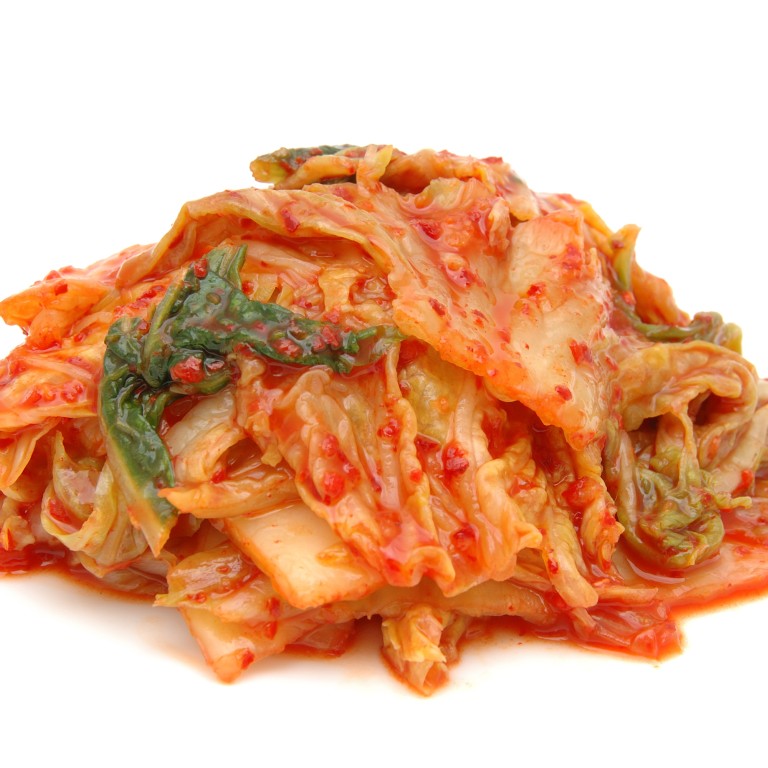
Susan Jung shares her kimchi recipe
My Korean friends tell me that only their grandmothers make their own kimchi. I'm neither Korean, nor a grandmother, but I love to make kimchi. It's delicious with many dishes, not just Korean food. I like it with everything from steak, sausages and roast chicken to instant noodles and sandwiches.
There are no hard-and-fast rule about the seasonings: some cooks (including me) add seafood, you can vary the amount of gochugaru (Korean chilli flakes) to suit your spice tolerance, and some versions don't use any chilli. I like to add a lot of other vegetables to my cabbage kimchi, but they are optional. The most critical step is the salting of the cabbage: if you don't add enough salt, or if you don't allow enough time for the salt to soften the cabbage leaves, you could end up with a mouldy mess.
I make cabbage kimchi in small batches, so I can eat it before it becomes over-fermented. The amount of kimchi paste in this recipe is enough for about 1 1/2 large heads of cabbage, but I use only half a cabbage at a time. I store the remaining paste in the fridge, so it's ready for when I want to make more. If you're cooking for a large number of people, triple the amount of cabbage (and other optional ingredients), and use up all the paste in one batch.
When buying cabbage, look for large, fat heads, rather than long skinny ones (and the same goes for the white radish). Don't cut the cabbage from stem to tip, or else you'll end up with lots of small bits of leaves. Instead, cut the cabbage through the stem end, then tear it in half. Tearing the cabbage lets the leaves divide along their natural lines so the pieces are larger.
In Hong Kong, the best place to buy the ingredients is the Korean shops along Kimberley Street in Tsim Sha Tsui. For the gochugaru, buy finely ground chilli flakes, not the coarse ones.
Cabbage kimchi
Half a large head of Korean, Japanese or Chinese cabbage, about 1kg
About 50 grams fine sea salt
35 grams glutinous rice flour
50 grams granulated sugar
100 grams gochugaru (or more or less, to taste)
100ml Korean salted anchovy sauce
100 grams Korean salted shrimp, drained and chopped
40 grams garlic, minced
20 grams grated ginger
Optional ingredients (enough to go with half a head of cabbage):
150 grams white radish, peeled, then sliced into matchsticks
8-10 spring onions, cut into 2cm-3cm lengths
20 flat Chinese chives, sliced into 2cm-3cm lengths
About 75 grams carrot, peeled, then sliced into matchsticks
Half a Korean pear, peeled, then sliced into matchsticks
Place the cabbage on a cutting board and make a cut about 4cm long through the stem end. Tear the cabbage into two pieces and remove the core. Cut the leaves into pieces that are about the same size. Put the leaves in a colander, rinse thoroughly with running water, then put the cabbage into a large bowl (or you may need two). Sprinkle salt thoroughly over the cabbage and use your hands to mix. Leave for at least four hours, mixing frequently, until the leaves are completely wilted and soft. Drain off as much liquid as possible from the leaves, then cover them with plenty of water. Rinse the cabbage well, then pour off the water and squeeze the leaves tightly between your hands. Put the cabbage back in the bowl, add fresh water and repeat the process. Taste several pieces of cabbage - they shouldn't be too salty. If the cabbage is very salty, repeat the washing and draining process. Squeeze out as much liquid as possible from the leaves.
Pour 240ml of water into a saucepan, add the glutinous rice flour and whisk until smooth. Place the pan over a low flame and cook, stirring constantly, until the mixture is translucent, then stir in the sugar. Cool the mixture to room temperature then mix in the gochugaru, anchovy sauce, salted shrimp, minced garlic and grated ginger.
Put the cabbage and any optional ingredients into a large bowl and add about one-third of the kimchi paste. Wearing a disposable glove on your working hand (this prevents the paste from staining your skin), mix the paste with the vegetables to coat them lightly. At this point, you can eat the kimchi fresh, as you would a salad. For fermented kimchi, put it into a large glass jar and seal tightly. Leave the jar at room temperature for a few hours, or for several days (if you like a more fermented taste). Occasionally open the jar, to let any fermenting gases escape. Store the kimchi in the fridge. Remaining kimchi paste should be stored in a glass jar in the fridge; it keeps for several months.

